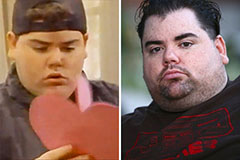Any individual has got their private opinion on the subject of Leaky Faucets: Why They Happen & What to Do About Them.

Leaking faucets may appear like a small aggravation, yet their influence surpasses just the aggravation of the sound. From wasting water to incurring unneeded monetary expenses and health and wellness threats, ignoring a leaking tap can bring about different effects. In this article, we'll look into why it's critical to resolve this typical household problem immediately and properly.
Wastage of Water
Environmental Effect
Leaking faucets contribute substantially to water waste. According to the Environmental Protection Agency (EPA), a solitary tap leaking at one drip per second can waste greater than 3,000 gallons of water annually. This not only pressures water sources but additionally impacts ecological communities and wild animals based on them.
Step-by-Step Overview to Fixing a Dripping Faucet
Tools Called for
Prior to trying to repair a leaking faucet, gather the necessary tools, consisting of an adjustable wrench, screwdrivers, substitute parts (such as washing machines or cartridges), and plumber's tape.
Common Tap Issues and Their Solutions
Identify the kind of tap and the particular concern causing the drip. Typical troubles include damaged washing machines, corroded shutoff seats, or faulty O-rings. Refer to supplier guidelines or online tutorials for detailed advice on repair work.
Financial Expenses
Raised Water Bills
Beyond the environmental effect, trickling taps can blow up water bills substantially. The collected wastefulness over time equates into higher utility costs, which might have been prevented with timely repair work.
Prospective Property Damages
In addition, long term dripping can result in damage to fixtures and surface areas bordering the faucet. Water accumulation can cause staining, corrosion, and also architectural concerns if left neglected, causing added repair service prices.
Wellness Worries
Mold and Mildew Growth
The constant presence of dampness from a trickling faucet creates an ideal setting for mold and mildew development. These fungis not only endanger indoor air high quality yet also present wellness threats, particularly for individuals with respiratory conditions or allergies.
Waterborne Diseases
Stagnant water in trickling faucets can end up being a breeding place for microorganisms and other microorganisms, boosting the risk of waterborne conditions. Impurities such as Legionella microorganisms thrive in stationary water, potentially causing serious illnesses when consumed or breathed in.
DIY vs. Expert Repair
Advantages and disadvantages of DIY Repair Service
While some might try to repair a dripping faucet themselves, DIY repairs feature their very own set of challenges. Without correct expertise and devices, do it yourself attempts can intensify the issue or lead to incomplete repairs, lengthening the issue.
Advantages of Employing a Professional Plumber
Employing a specialist plumber makes sure that the underlying cause of the trickling tap is addressed successfully. Plumbing technicians possess the competence and equipment to detect and fix faucet issues successfully, conserving time and minimizing the threat of more damages.
Ecological Duty
Specific Payment to Conservation
Taking duty for fixing dripping taps lines up with broader initiatives toward water conservation and ecological sustainability. Every person's activities jointly make a substantial impact on preserving valuable resources.
Sustainable Living Practices
By focusing on punctual fixings and adopting water-saving habits, individuals contribute to lasting living methods that profit both existing and future generations.
Safety nets
Normal Maintenance Tips
To avoid leaking faucets, carry out routine maintenance such as cleansing aerators, evaluating for leakages, and changing damaged components immediately. Additionally, think about setting up water-saving gadgets or updating to extra efficient fixtures.
Relevance of Prompt Repairs
Dealing with dripping faucets as soon as they're discovered avoids additional water waste and prospective damage, ultimately conserving both water and cash in the future.
Effect On Property Worth
Perception of Well-Maintained Residential Or Commercial Property
Maintaining a residential or commercial property in good condition, including resolving maintenance issues like trickling faucets, boosts its viewed worth and charm among prospective buyers or occupants.
Influence on Resale Worth
Features with well-kept plumbing components, including taps, command greater resale values in the realty market. Addressing leaking taps can add to a positive perception throughout property assessments and arrangements.
Conclusion
Addressing a trickling tap goes beyond mere benefit; it's a necessary action towards preserving water, lowering economic prices, and guarding wellness and property. Whether through do it yourself fixings or specialist help, taking action to deal with trickling faucets is a small yet impactful means to advertise accountable stewardship of resources and add to a healthier, more lasting future.
Why Are My Faucets Dripping (And Can I Fix it Myself)?
Causes of a Dripping or Leaking Faucet
Whether you’re hearing drops of water falling and hitting a sink, or noticing water ooze out from the base of the spout, you shouldn’t ignore a dripping or leaking faucet. And, the good news is, sometimes you can fix the problem yourself.
In this article, we’ll review a few common causes of dripping and leaky. We’ll also walk you through some basic ways to find the problem and handle it without calling anyone — and let you know when to call in a pro.
But, no matter what the cause, or whether you can handle it on your own, the sooner you address it, the better.
Each drip may be a tiny amount of water. But, they all add up quickly. According to the U.S. Geological Survey, one faucet losing one drop every 20 seconds — five a minute — wastes around a liter of water every day, and 173 gallons a year.
Add in more than one in your house, and it’s a lot of water to waste. So, we’ll help you get to the bottom of things quickly.
Four Reasons Your Faucet May Be Dripping
Aerator is Damaged or Unseated Valve Seat is Corroded O Ring is Loose or Worn Out Part of the Assembly is Loose Aerator is Damaged or Unseated
If you unscrew the end of your faucet, you’ll find the aerator. It’s the little stem piece with a screen on it that shuts off the water circulation.
If it’s damaged, or if it’s not sitting right, it will allow water to pass through.
Valve Seat is Corroded
Next is the valve seat, which is connected to the washer. If the washer wasn’t in place correctly, then it could have ground against the seat. Over time, this damages the valve seat.
The problem could also be corrosion: Over time, the part has worn out, and it’s now allowing water to pass through.
O Ring is Loose or Worn Out
Since the o ring is only a small rubber gasket, it’s a common reason why the faucet is dripping. You’ll find it at the base of the faucet, and it’s there to keep water from coming out where it’s not supposed to.
However, it’s common for the o ring to wear out over time. When it does, you’ll notice a drip.
Part of the Assembly is Loose
So far, we’ve looked at a few small, specific parts. But, the problem could be anywhere in the assembly if something’s out of place.
Even if a part isn’t damaged, over time, it may have become loose or dislodged. It could be the parts we mentioned, or the aerator at the tip of the faucet, the stem itself,
Can I Fix a Leaky Faucet Myself?
Depending on the problem, and how handy you are, there’s a chance you can fix a leaky faucet without calling a professional. But, you do run the risk of making the problem worse.
If it’s a small drip, you can certainly try a few troubleshooting tactics. We’ll walk you through them in a moment.
But, no matter what, your first step should be shutting off the water coming into the faucet. You should find a shutoff valve under the sink on the pipes leading to it. Turn each one clockwise until they close tightly.
Next, make sure you have the right tools for whatever you’re attempting. It’s tempting to make do with what you have. But, you need the right ones for a reason: You’re often dealing with small parts that can break if you handle them carelessly.
If you’re feeling confident, here are some places to start.
Items Near the Tip of the Faucet
A few of the parts we mentioned — particularly the valve seat and washer — are located at the tip of the faucet where the water comes out. They’re easy to access, making it a good place to start.
Check the O Ring
To check the o ring, you’ll need to take off the spout at the base. It’s easiest on kitchen sinks with long spouts, versus the smaller, bulkier base on most bathroom sinks.
Either way, this can be tricky, so do it carefully and don’t force anything. If it’s not coming right off, you’re much better off calling in a pro than possibly breaking something.
For a kitchen sink, there’s usually a nut or coupling assembly at the base of the spout. These often slide off easily without using any tools.
Once you’ve disassembled those parts, gently but forcefully twist off the spout.
Then, you can see the o rings. There should be two of the rubber gaskets on the base. If they look worn or damaged, replace them, and see if that solves the problem.

I discovered that write up on while doing a search on the internet. Enjoyed reading our entry? Please quickly share it. Let other people find it. I am grateful for your time. Kindly check up our blog back soon.
 Danny Tamberelli Then & Now!
Danny Tamberelli Then & Now! Michael Bower Then & Now!
Michael Bower Then & Now! Andrea Barber Then & Now!
Andrea Barber Then & Now! Tonya Harding Then & Now!
Tonya Harding Then & Now! Kerri Strug Then & Now!
Kerri Strug Then & Now!